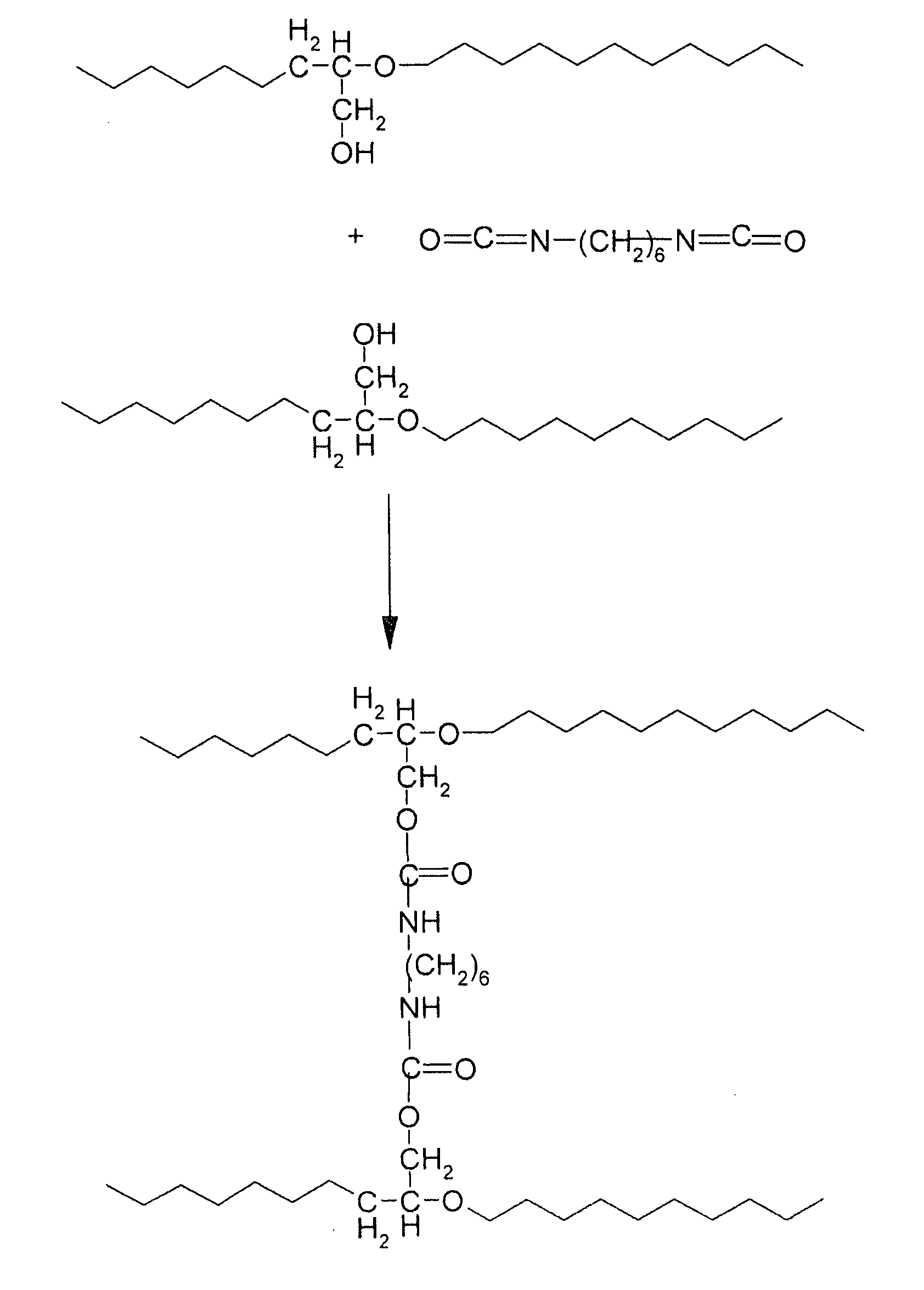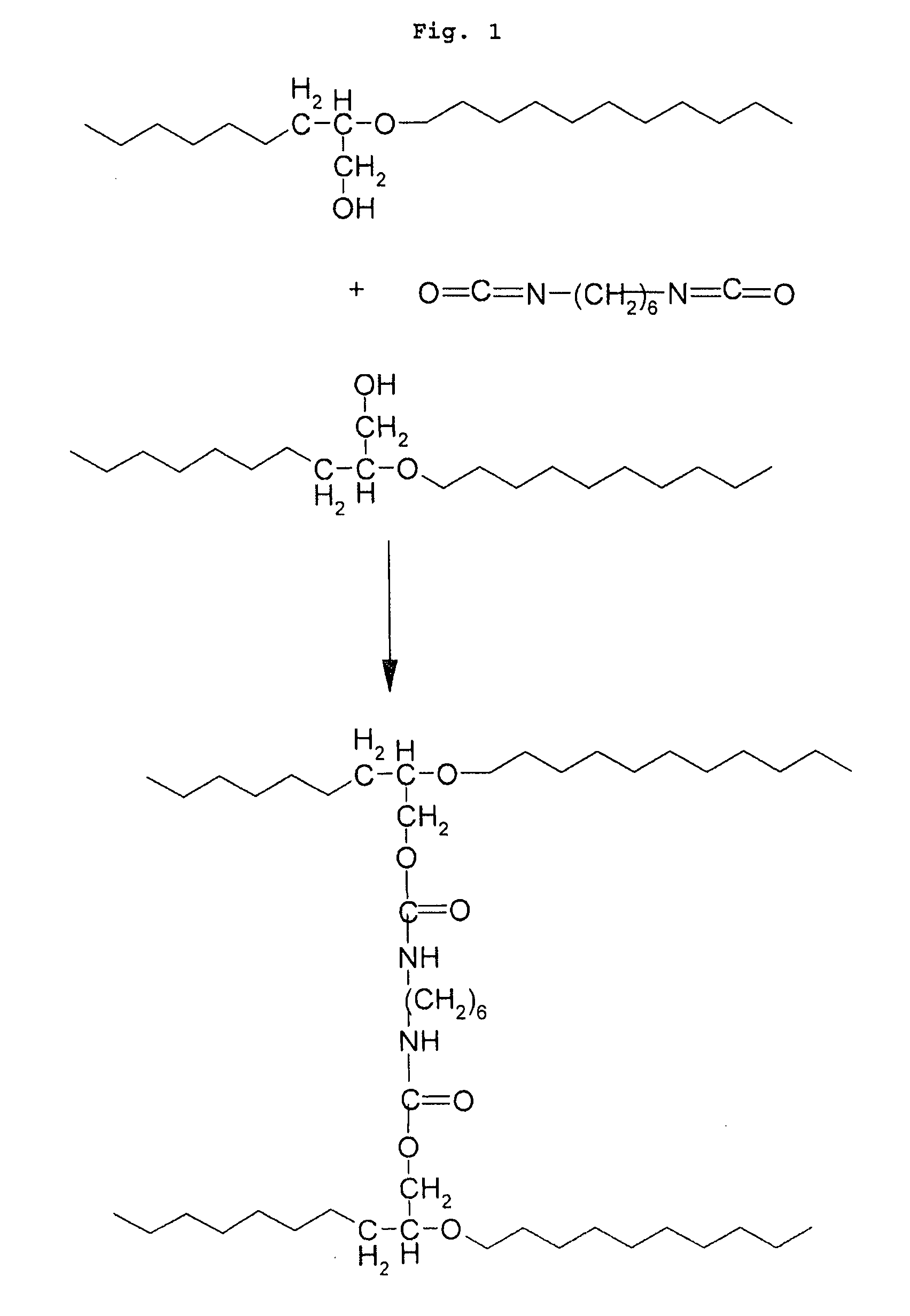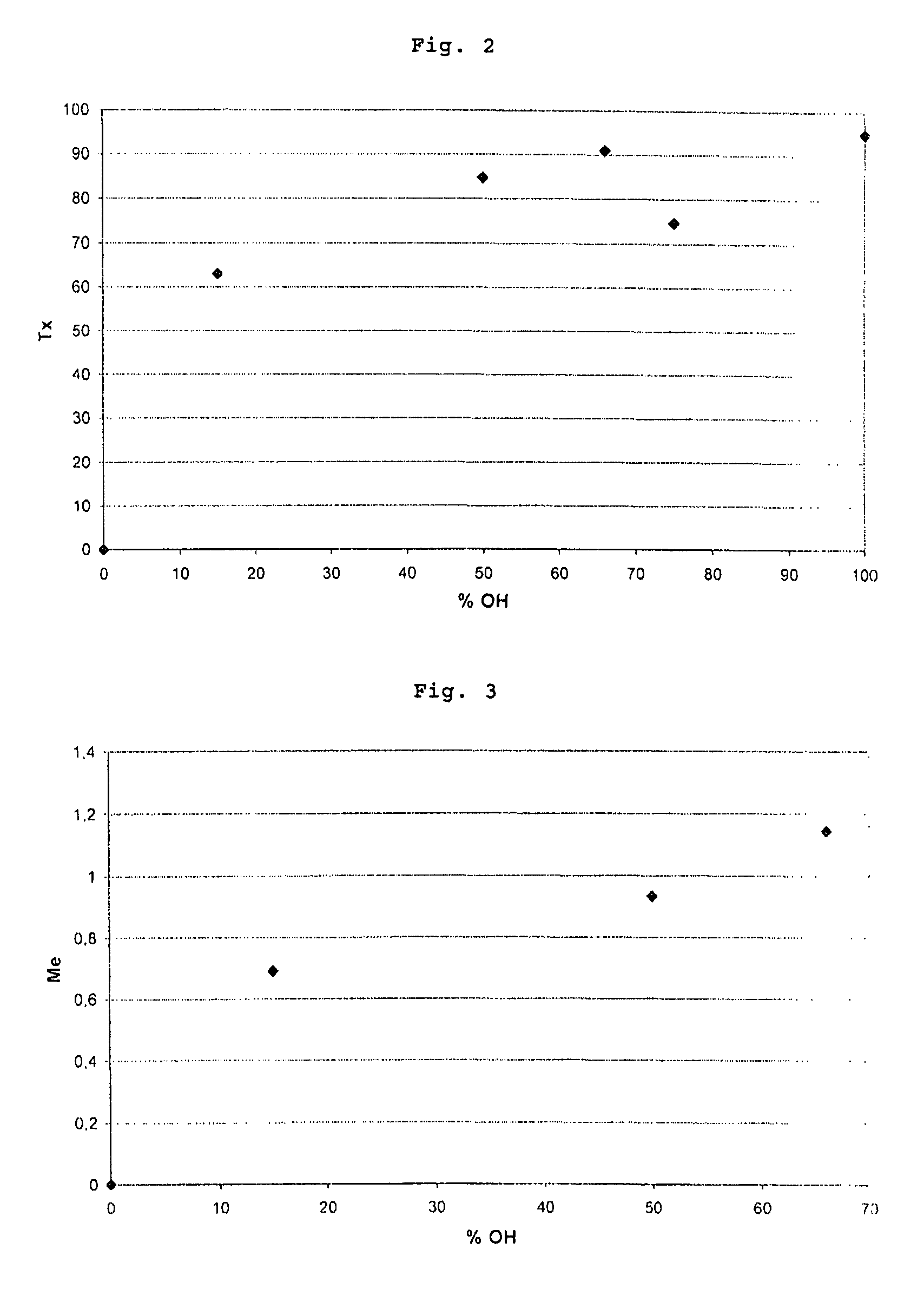Copolymer of propylene or ethylene oxide and of an oxirane bearing an ionic group
a technology of oxirane and ethylene oxide, which is applied in the direction of electrochemical generators, non-aqueous electrolyte cells, non-metal conductors, etc., can solve the problems of irregular introduction of polyether chains and accompanied by reduced molar masses, and achieves less toxic, good mechanical strength, and less expensive
- Summary
- Abstract
- Description
- Claims
- Application Information
AI Technical Summary
Benefits of technology
Problems solved by technology
Method used
Image
Examples
example 1
Preparation of a poly(ethylene oxide-rand-glycidol) Random Copolymer
[0097]The method employed was similar to the method described by Cohen et al. (mentioned above).
[0098]Introduced into a 500 ml three-necked flask were 200 ml of diethylene glycol monomethyl ether, which were then heated to 100° C. under a stream of argon and with stirring. Next, 10 g of a poly(ethylene oxide-co-epichlorohydrin) copolymer in which the number of moles of chlorine functional groups was 0.0 were introduced, which copolymer may be represented by the following semideveloped formula (I):
[0099]After the copolymer (I) was dissolved, 5.88 g of potassium acetate (0.06 mol) were added, the reaction mixture was heated to 175° C. and maintained at this temperature for 6 hours. Next, the reaction mixture was left at room temperature and precipitated in ether. The copolymer obtained was separated by filtration and vacuum-dried for 12 hours at 40° C. It comprised 90% by number of oxyethylene units (corresponding to ...
example 2
Preparation of a poly(ethylene oxide-rand-lithium glycidyl sulfate) Random Copolymer
[0100]Introduced into a 500 ml three-necked flask containing 250 ml of dichloromethane and 1.93 g of Amberlist 21® resin were 3.63 g of copolymer (II) (corresponding to 7.71×10−3 mol of OH groups). The flask was placed in a bath of ice and a stream of argon flowed through the flask throughout the entire duration of the synthesis.
[0101]Introduced into a dropping funnel were 40 ml of dichloromethane and 1.25 ml of trimethylsilyl chlorosulfonate (corresponding to an excess of 5% relative to stoichiometry), and then the solution was added to the three-necked flask drop by drop. The mixture was left under a stream of argon for 1 hour after the addition of trimethylsilyl chlorosulfonate was completed. Next, the solvent was removed with a vacuum rotary evaporator, the residue was taken up in 100 ml of distilled water, and then the solution obtained was neutralized by adding a 1 mol / l aqueous LiOH solution. ...
example 3
Preparation of poly(ethylene oxide-rand-lithium glycidyl sulfate-rand-glycidol) Random Copolymers
[0103]The operating procedure of Example 2 was repeated several times, modifying the respective amounts of the reactants so as to convert only some of the ethylene glycol units into lithium sulfated ethylene glycol units. The particular operating conditions and the results of the various trials are given in the following table: nOH represents the number of moles of OH provided by the copolymer (II), U(Li) represents the percentage of U(Li) units relative to the total of the units other than the oxyethylene units, and % U(OH) represents the percentage of U(OH) units relative to the total of the units other than the oxyethylene units.
AmberlystCopolymer (II)21(CH3)3SiS—O3ClFinal copolymerMassMassVolume% U% UFor-(g)nOH(g)(ml)(Li)(OH)mula3.327.05 × 10−31.760.928515IV3.286.99 × 10−31.750.575050V2.324.92 × 10−31.230.273367VI2.625.56 × 10−31.390.212575VII
[0104]The semideveloped formulae of the v...
PUM
| Property | Measurement | Unit |
|---|---|---|
| polar | aaaaa | aaaaa |
| Ph | aaaaa | aaaaa |
| conducting | aaaaa | aaaaa |
Abstract
Description
Claims
Application Information
 Login to View More
Login to View More - R&D Engineer
- R&D Manager
- IP Professional
- Industry Leading Data Capabilities
- Powerful AI technology
- Patent DNA Extraction
Browse by: Latest US Patents, China's latest patents, Technical Efficacy Thesaurus, Application Domain, Technology Topic, Popular Technical Reports.
© 2024 PatSnap. All rights reserved.Legal|Privacy policy|Modern Slavery Act Transparency Statement|Sitemap|About US| Contact US: help@patsnap.com










